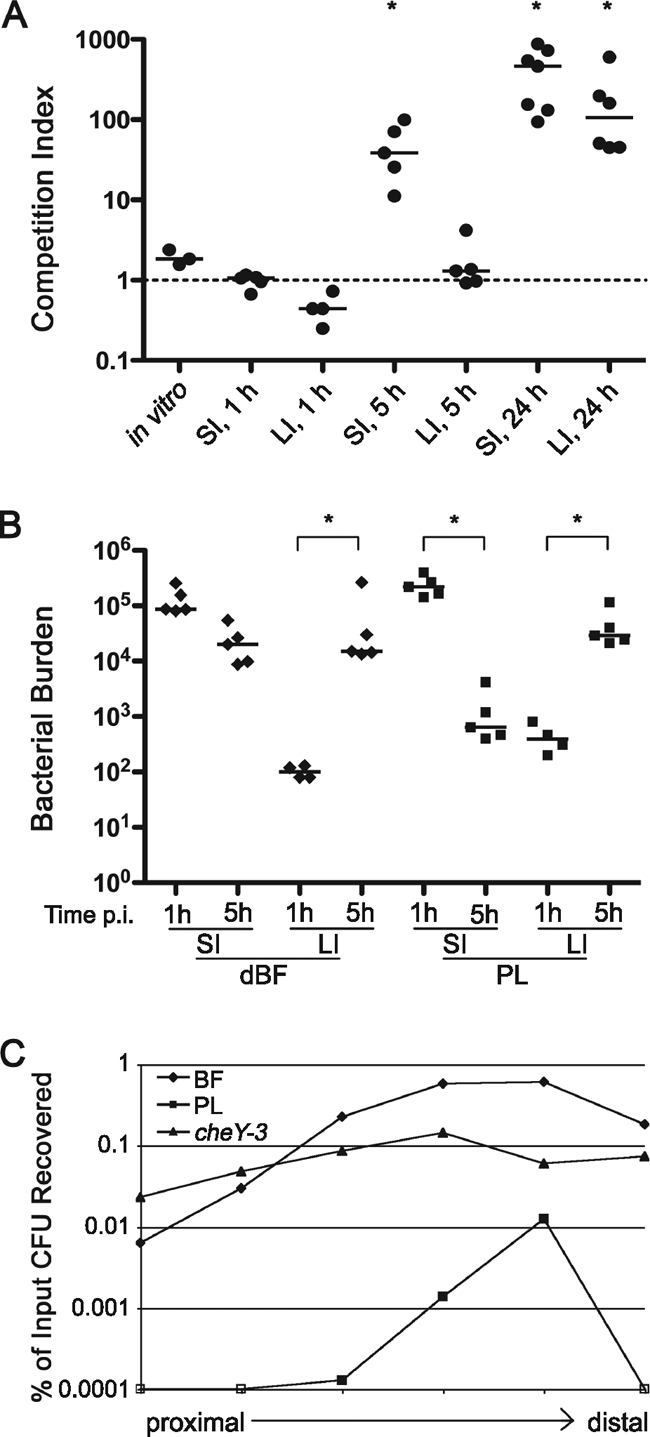FIG. 5.

The dynamics of biofilm-induced infectivity. (A) Biofilm-induced hyperinfectivity is detectable early, but not immediately, during infection and is specific to the small intestine. Differentially marked dBF and PL bacteria were used to coinfect mice. At 1, 5, or 24 h postinoculation, the stomachs, small intestines (SI), and large intestines (LI) were harvested, and the bacteria were enumerated on LB agar containing X-Gal. The CIs were calculated for each tissue at each time point. Each symbol corresponds to the CI value of an individual mouse. Horizontal lines indicate the median. *, P < 0.05 by Wilcoxon signed rank test, where the hypothetical value is 1. (B) Bacterial burden (CFU) of dBF and PL bacteria in the SI and LI at 1 and 5 h postinoculation. *, P < 0.05 for the indicated comparisons by Kruskal-Wallis test. (C) Biofilm-derived bacteria assume a distribution in the small intestine similar to that of PL bacteria but achieve a higher level of colonization. Mice were inoculated with PL, dBF, or nonchemotactic (cheY mutant) bacteria. The number of CFU present in each of six equal-sized segments at 5 h postinoculation was determined and normalized to the input CFU count. Data points are the mean number of CFU present in at least five mice.
